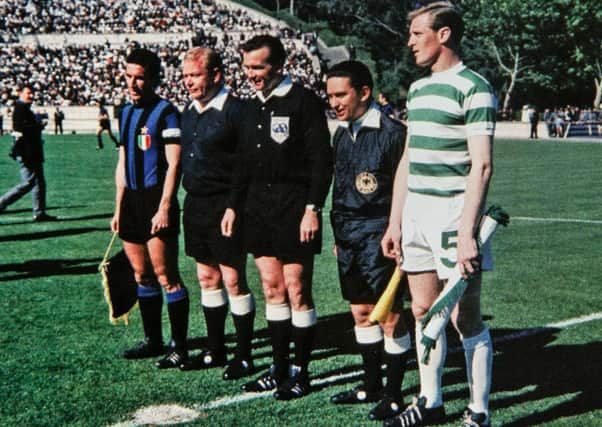The fan who has spent lifetime chronicling the Lisbon Lions


Pat Woods is all of that, and so much more, when it comes to the Lisbon Lions. The unassuming 70-year-old is, indeed, the de-facto Celtic historian, having produced authoritative tomes about every aspect of his beloved club for almost four decades.
His eye for posterity can be traced far earlier, though. Woods reckons close on 15,000 supporters made the trek to the Iberian peninsula for Jock Stein’s masterminding of his Celtic team’s capture of the European Cup, the 50th anniversary of which arrives tomorrow.
Advertisement
Hide AdAdvertisement
Hide AdThen nearly 21, he is probably one of the precious few fans who still has his ticket, not just for the game, not just for the train travel covering his London to Lisbon route, but for the “servico special” – one of the Portuguese trains laid on to ferry fans from the city centre to the Estadio Nacional on Lisbon’s outskirts.
Maybe the entire unforgettable experience of watching his team being kissed by the football gods in a sun-kissed foreign land that took him beyond his own for the first time had the profound effect of captivating Woods about capturing those memories. Yesterday, we made our way to a cubby hole behind the SFA stadium to delve into the treasure trove of covers, cuttings and classic snaps that represent the life’s work of collating the achievement of the Lisbon Lions. Stored within the Hampden museum for safekeeping, this archive runs to no fewer than 46 display cases.
All manner of items draw the eye but Woods, whose latest book, We’ll Always Have Lisbon, has just been published – subject matter self-explanatory – has some quirky collectables that particularly fascinate. A magazine emblazoned with the figure three to denote the third title Internazionale were supposed to secure the evening of their 2-1 defeat by Celtic is a real standout.
“It was produced after Inter had beaten Real Madrid [2-0 at the Bernabeu in the second leg of the teams quarter-final, to win 3-0 on aggregate],” he said. “The Italians thought the trophy then would be theirs.”
One small matter that Woods charts in his book written with David Frier – a retired lecturer in Portuguese studies, which meant he could access newspaper and police archives from the Lisbon side – is that most material produced in advance of the final had the wrong iconography for the trophy being played for, including the matchday programme.
An image of the old European Cup was pictured on the front, but Uefa had by then commissioned a new design for the silverware after granting a request from Real Madrid to be allowed to keep the old one after winning it six times.
“One of the stipulations for the new cup was that is should be able to hold four bottles of champagne,” said Woods.
A pennant commemorating the 1967 final is fondly regarded by a man in essence a walking Celtic encyclopedia and it is no common or garden item. Bought by Woods a fortnight after he returned from an extended stay in Lisbon – “I was having such a good time and had an open-ended ticket, so I stayed till the Sunday [with the final on the Thursday]” – the fact that it has nothing to do with the club itself speaks of very different times.
Advertisement
Hide AdAdvertisement
Hide Ad“There was no club merchandise in those days, none whatsoever,” he said. “So private firms did cash in or, when it came to T-shirts, scarves or hats, these things were home made.”
Woods’ ability to burrow away to find the new and unknown about an event which has been pored over and picked apart for half a century is in itself worthy of recording. He never felt that revisiting 1967 – he previously co-authored the book One Afternoon in Lisbon almost three decades ago – would leave him sifting over the same old, same old.
“My research takes a lot out of me, so, if I wasn’t ’tturning up anything new when I embarked on my research, I would have dropped it immediately,” Woods said.
“I go to Paris every year and since the Biblioteque Nationale was built in the 1990s, what you can obtain access to has grown greatly – as is true of what the internet allows.
“You can order in advance online in this Paris library and then scour through all manner of newspapers that are supplied to you in bound volumes – the best way to look up old newspapers. I can speak French and Italian and have a working knowledge of Spanish, so was able to read more than 50 newspapers from around the days of Celtic’s win in Lisbon.”
One Italian newspaper from a little later tickles Woods. It is an interview with Sean Connery, then promoting his latest Bond film You Only Live Twice. The headline reads: “Celtic’s triumph means as much to me as all my 007 movies put together”.
“Imagine that,” said Woods. The real world can feel reminagined with Woods’ archive.
l We’ll Always Have Lisbon by David Frier and Pat Woods. Available from Amazon and Celtic Shops. Priced £9.99